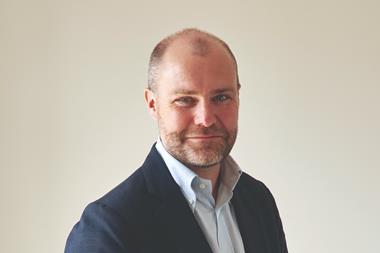Post-pandemic, businesses are looking to improve how their workspaces operate.

Our places of work need to be better suited to hybrid working and collaboration; they need to be effective and efficient uses of space and resources; and they need to be sustainably designed.
When refitting the workplace, we increasingly need to ‘creatively reuse’. From a building’s envelope to its materials, furniture and fittings, we should look at the built environment as stored resources to use and reimagine.
As designers, we can creatively transform what already exists to deliver new and better ways of working. We can repurpose products destined for landfill and spaces that are underused to achieve three important goals: extend the lifespan of buildings, limit embodied carbon emissions and advocate for a non-disposable culture.
LOM has recently worked with a major financial institution at its London headquarters to transform 11 floors and reuse as much of the existing contents as possible (pictured). The result maximised the existing space, prolonged the lifespan of the building and helped the floors meet a higher sustainability standard.

At a macro level, a flagship co-working space was designed into the heart of the building, new meeting pods were suspended in the empty space in the building’s atrium and redundant ground-floor space was transformed into a multifunctional conference centre.
At the micro level, old desktops were transformed into focus booths, colourful whiteboards and moveable collaboration tables. Tired-looking desk bases were remodelled as flexible storage. What is essential is making these pieces look not reused but tailor-made.
Long term, architects and clients need to help change the industry mindset on refits and renovations – minimising waste and buying quality pieces and materials where new items are needed, with a mind to how they could be repurposed.
Creative reuse can provide businesses with renewed, bespoke and sustainable space that saves carbon and makes the workspace fit for new ways of working.
Chiara Cantilena is an associate at LOM Architecture and Interior Design




























No comments yet